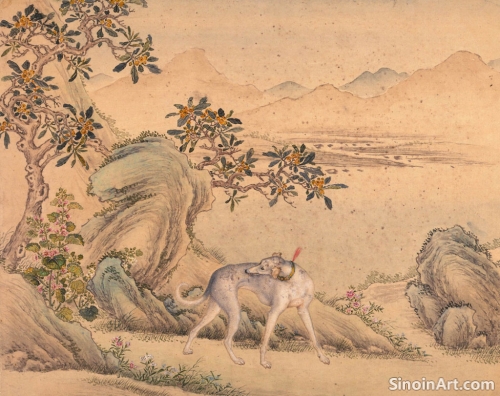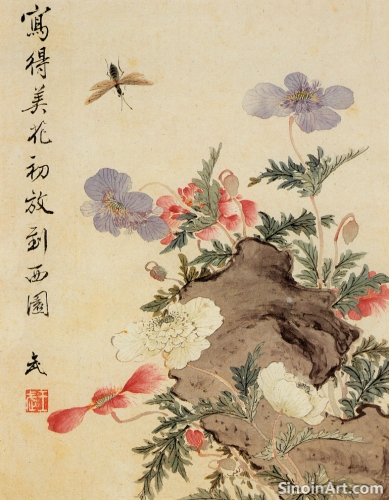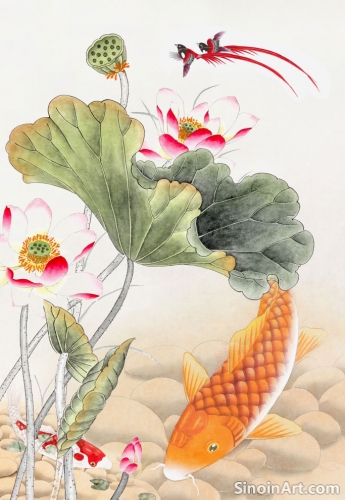Learning Gongbi: Steps for Aspiring Artists
|
Learning Gongbi painting is a journey that requires dedication, patience, and a deep appreciation for traditional techniques. It involves not only mastering the brushstrokes but also developing a keen eye for detail and an understanding of the art form's cultural significance. For aspiring artists, this journey can be both challenging and profoundly rewarding.  The first step in learning Gongbi is gaining a solid foundation in traditional Chinese brushwork. This involves practicing basic line strokes and understanding the nuances of ink control. Many beginners start by copying traditional masters, learning the structure and rhythm of their strokes. Developing a steady hand and mastering different brush handling techniques is essential for creating precise lines.  Understanding the "gougou" method, the meticulous outlining of the subject, is fundamental to Gongbi. This requires developing skills in observing form and structure, and translating them onto paper with fine, unbroken lines. This is where the meticulous aspect of Gongbi really comes into play, demanding attention to even the smallest detail. Practicing outlining, with both simple and more complex subjects, is the core of the early training.  Color application, the "ranse" method, is another key aspect of learning Gongbi. This involves mastering the techniques for layering thin washes of color to achieve subtle gradations and luminosity. Understanding color mixing and how to create translucent washes takes considerable practice. The ability to work with layers is one of the defining features of Gongbi painting. The study of traditional motifs and subjects is an important part of the process. Understanding the symbolic significance of flowers, birds, and other common themes is essential for understanding the context of Gongbi. Artists learn how to accurately depict these subjects while staying true to the art form’s tradition. Studying existing works is as important as hands-on practice. Finally, practicing patience and persistence is perhaps the most important element of learning Gongbi. It is a time-consuming art form that demands a high degree of dedication. Aspiring artists must be prepared to invest considerable time and effort in their training. With consistent practice and a deep respect for the tradition, aspiring artists can develop the skills to create their own beautiful and meaningful Gongbi artworks. |
Tag : Learning Gongbi, how to paint Gongbi, Chinese painting lessons, Gongbi art for beginners, traditional painting education
Related information
- Color in Gongbi: Layering and Luminosity
- The Spiritual Aspects of Gongbi Painting
- Gongbi Color Techniques: Layering and Luminosity
- The Enduring Legacy of Gongbi Painting: Tradition and Innovation
- Gongbi Painting and the Depiction of Clouds and Mist
This article explores the use of color in Gongbi painting, highlighting the "ranse" layering method, the use of mineral-based pigments, the process of creating luminous effects, and the overall importance of color in conveying mood and meaning.
An examination of the spiritual dimensions of Gongbi painting, highlighting its meditative qualities and connection to nature.
Color, while carefully controlled, plays a vital role in creating the refined beauty of Gongbi painting. Unlike the spontaneous use of color in Xieyi, Gongbi artists employ a meticulous approach, building up their colors through numerous thin layers, and creating a sense of depth, luminosity, and subtle gradations of tone. This approach is a hallmark of the Gongbi style and contributes to the richness of its visual effects.
Gongbi painting, rooted in the rich artistic traditions of imperial China, has proven to be an enduring and highly versatile art form, adapting and evolving across generations while maintaining its core principles of precision, detail, and symbolic depth. The long history of Gongbi painting continues to be influential on modern art and the appreciation of traditional techniques.
This article explores the depiction of clouds and mist in Gongbi painting, highlighting the techniques used to create a sense of depth, luminosity, and atmosphere, and how the subtle variations in color and tone evoke a sense of mystery and serenity.